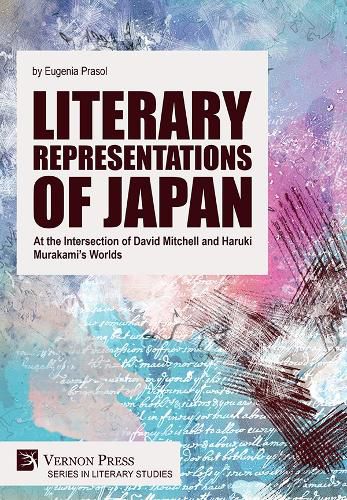Readings Newsletter
Become a Readings Member to make your shopping experience even easier.
Sign in or sign up for free!
You’re not far away from qualifying for FREE standard shipping within Australia
You’ve qualified for FREE standard shipping within Australia
The cart is loading…






This title is printed to order. This book may have been self-published. If so, we cannot guarantee the quality of the content. In the main most books will have gone through the editing process however some may not. We therefore suggest that you be aware of this before ordering this book. If in doubt check either the author or publisher’s details as we are unable to accept any returns unless they are faulty. Please contact us if you have any questions.
This book will focus on analyzing the different aspects of Japan's representation in the novels of Haruki Murakami and David Mitchell. It is proven that Murakami creates and recreates Japan without implementing any orientalist features or exotic imagery. In the works of both authors, the intent to depict a new world of Japan stripped of traditional stereotypical traits becomes clear. The difference between Murakami and Mitchell's representation of Japan lies in the difference between Japan as seen by the Japanese and Japan as seen by modern Westerners, but both are 'correct' images of Japan. It is a recreation of the global image of Japan.
In that sense, the texts of Murakami and Mitchell are complementary representations of Japan through East-West cultural dialogue. Studying the representations of Japan and Japanese national character helps to understand the role of Murakami and Mitchell in the formation of a new image of Japan, the de-stereotyping of anachronistic ideas about Japanese national exclusivity, enriching by doing so the world literature with new visions of the country and its culture.
The purpose of the comparative analysis of English and Japanese literary works performed in this work is to reveal both deep analogies and differences in the representation of the image of Japan, actualizing the national specificity of the texts. This research advances the understanding of how both general and specific components of literary representations of Japan and Japaneseness are manifested in the East-West cultural dialogue.
$9.00 standard shipping within Australia
FREE standard shipping within Australia for orders over $100.00
Express & International shipping calculated at checkout
This title is printed to order. This book may have been self-published. If so, we cannot guarantee the quality of the content. In the main most books will have gone through the editing process however some may not. We therefore suggest that you be aware of this before ordering this book. If in doubt check either the author or publisher’s details as we are unable to accept any returns unless they are faulty. Please contact us if you have any questions.
This book will focus on analyzing the different aspects of Japan's representation in the novels of Haruki Murakami and David Mitchell. It is proven that Murakami creates and recreates Japan without implementing any orientalist features or exotic imagery. In the works of both authors, the intent to depict a new world of Japan stripped of traditional stereotypical traits becomes clear. The difference between Murakami and Mitchell's representation of Japan lies in the difference between Japan as seen by the Japanese and Japan as seen by modern Westerners, but both are 'correct' images of Japan. It is a recreation of the global image of Japan.
In that sense, the texts of Murakami and Mitchell are complementary representations of Japan through East-West cultural dialogue. Studying the representations of Japan and Japanese national character helps to understand the role of Murakami and Mitchell in the formation of a new image of Japan, the de-stereotyping of anachronistic ideas about Japanese national exclusivity, enriching by doing so the world literature with new visions of the country and its culture.
The purpose of the comparative analysis of English and Japanese literary works performed in this work is to reveal both deep analogies and differences in the representation of the image of Japan, actualizing the national specificity of the texts. This research advances the understanding of how both general and specific components of literary representations of Japan and Japaneseness are manifested in the East-West cultural dialogue.